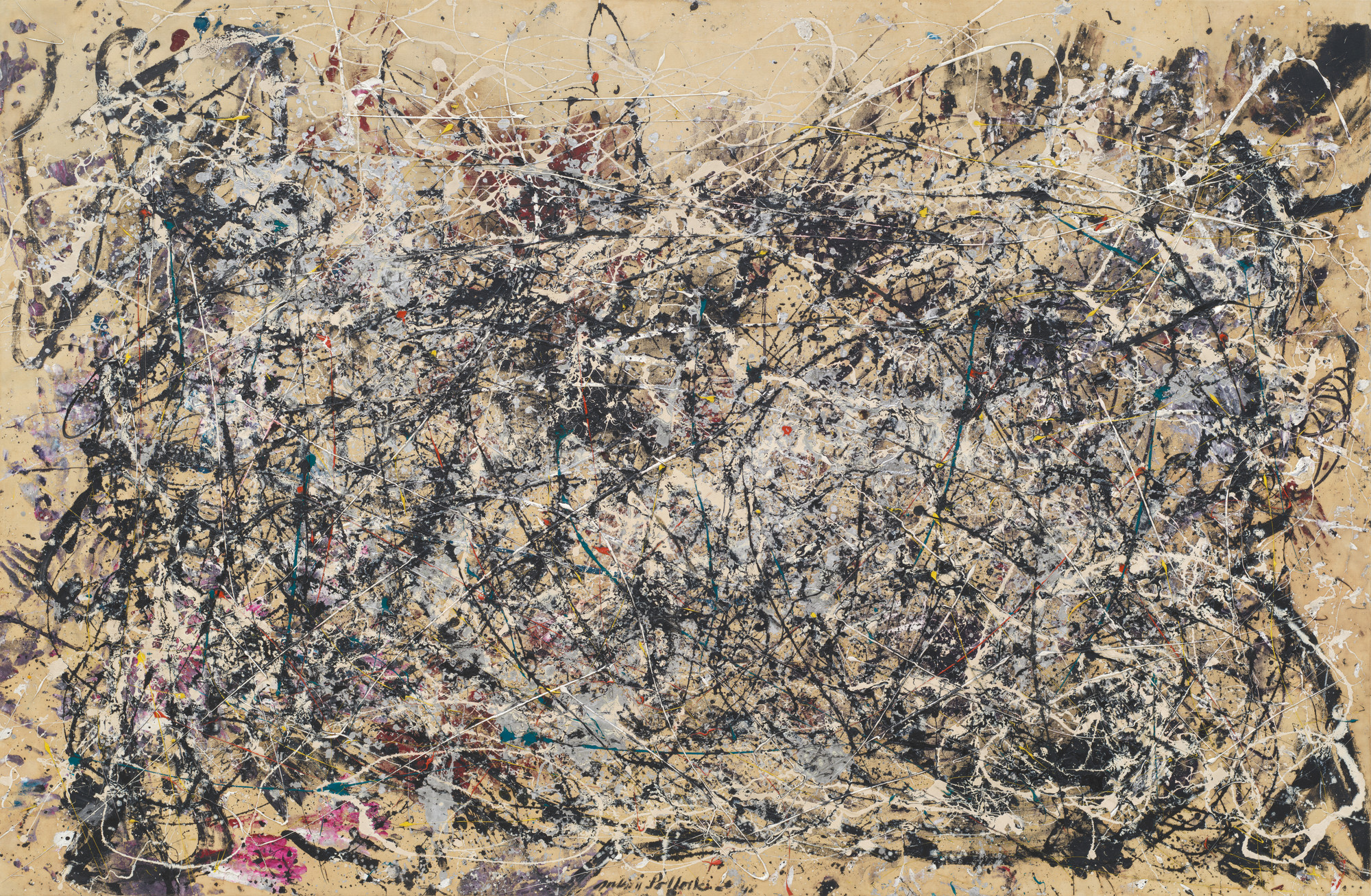Abstract Expressionism and Pop Art
September 30, 2021
Jackson Pollock. Number 1A, 1948
Abstract Expressionism and Pop Art
Both abstract expressionism and pop art originated in the United States in the mid-twentieth century. Abstract Expressionism was the United State’s first international art movement, effectively establishing New York as the center of the modern art world, paving the way for Pop Art. One of the most notable abstract expressionists is Jackson Pollock. Jackson Pollock had a tremendous impact on American Expressionism by creating his ‘drip and splash style;’ a new definition of surface and touch, a new syntax of relationships among space, pigment, edge, and drawing displacing hierarchies with an unprecedented and powerful self-generating structure. Pollock uses the concept of heroic individualism to highlight the narratives of his paintings.
I’ve had the pleasure of seeing several of his more abstract “drip” pieces on display at the Museum of Modern Art (MoMA), notably, ‘Number 1A, 1948.’ For this piece, he used his paint to capture the movements of his entire body on the canvas. This painting struck a chord with me due to its enticing colors and the noticeable handprints on the composition’s upper right, forever marking the painting as a piece of himself. While abstract expressionists explored art in its purest form, pop art challenged what could be considered art.
One of the most notable pop artists was Andy Warhol. Andy Warhol was famous for exploring the cult of merchandise and consumerism through his portrayal of American icons and industrial inventions. He used a variety of modern techniques reflecting his portrayal of “modern” American life. His “mechanical aesthetic” was shown through his techniques which he described as "pertaining to an assembly line.” He deliberately sought impersonal, mechanical art as a creative subversion of the traditional expectations of art. I had the pleasure of seeing some of his pieces, notably the Marilyn Diptych (1962) in the Tate Gallery and his Tom Seaver piece in the Baseball Hall of Fame. What struck me most about these paintings was his use of bold colors and shadows as an action-filled static portrayal of the icons.
While I have had the pleasure of experiencing works by both of these artists, one artist from this time which I feel personally relate to is Judith Godwin. Godwin was an abstract expressionist who was inspired by the choreographer Martha Graham. While her paintings are true to the abstract form, in some paintings you can truly see Graham’s movements. I appreciate Godwin mostly due to her fusion of theatrical movement with traditional color theories to produce rich tonal abstract pieces. While her pieces are static, like Pollock, you can truly see the movement. Godwin also approached her work with her interest in Zen Buddhism in mind. I feel that I am most closely related to Godwin because, like her, I identify as a Zen Buddhist. I have also studied the performing arts for a considerable length of time. Mostly, her paintings just draw me in.

Comments
Post a Comment